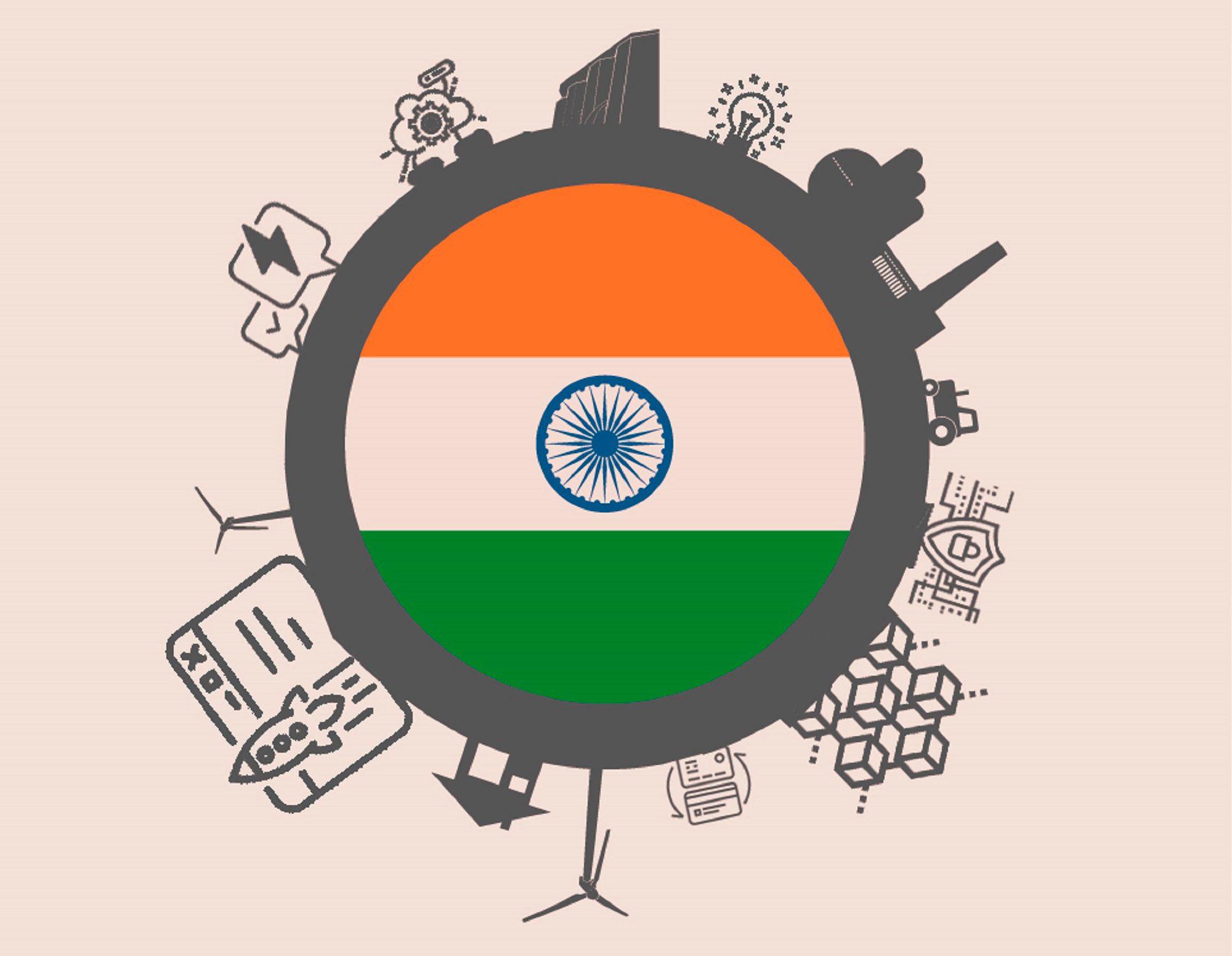Only time will tell if the COVID-19 induced pandemic is a ‘Black Swan’ event. The loss of lives is irreparable, and we must still do our part to help augment the vaccination coverage across our communities. While human beings were at grave risk, organizations have not been completely immune to the perils of the pandemic either.
Organizations that had considered ‘Digital Transformation’ as a significant paradigm shift in operations have thrived during the last year, while the ones that treated it as just a buzzword went through a tough time. Startups – despite being equipped with best-of-breed technology – also faced some unique challenges.
The post-pandemic ‘startup’ universe
Startups leverage the potent combination of ‘digital’ and ‘data’ to empower consumers with convenience. The pandemic has classified startups into three categories, based on the two key parameters of ‘operations and customer engagement’ and ‘delivery of service/offering’:
Completely Digital (No Physical Dependence): These startups operate in a fully digital manner and deliver their service remotely with no physical dependence whatsoever. In April 2020 when India experienced a complete lockdown, collaboration software ‘Zoom’ witnessed a 30-fold jump in usage. Though not completely attributable to India, its growth – due to ease of use, consistent latency below 150 milliseconds, and over 200 million daily active users (DAU) – enabled Zoom to generate a revenue of $2.6 billion in 2020, a 317 percent rise year-over-year. Similarly, Indian Ed-Tech major BYJU’s witnessed a user addition of more than 25 million students to its existing 70 million student base in the pandemic.
Semi-Digital (Physical Delivery of Product or Service): These startups manage everything from customer engagement, to order management online. However, their offerings must be delivered at the customer’s doorsteps. Direct-to-Consumer (D2C) brands and food tech brands fall in this category. Their delivery of service took a toll as demand surged during the lockdown, but the support ecosystem was crippled from lack of staff, thereby impacting demand fulfillment and ETAs. At India’s leading online grocer BigBasket, for example, the lockdown in April 2020 saw a five-fold surge in orders yet fulfillment was impacted because the company drivers and delivery workers migrated to their hometowns during the lockdown. BigBasket thus immediately hired nearly 7,000 people pan-India in order to fulfill the pandemic-induced rise in demand, and offered these new workers increased pay and personal protection equipment (PPE) kits.
‘Physically Dependent’ Consumption: – Such startups can function only if the consumer of their product or service can physically move out of their homes. Examples include personal mobility startups such as Uber and Ola Cabs. They are powered with the best-in-class technology yet the demand for their product was next to nothing during the pandemic. Such start-ups used the idle time to prepare and pivot for the ‘new normal’. Ola created ‘5 layers of safety’ comprising measures such as mask usage, sanitization, and additional protection screen to safeguard passengers and drivers.
Takeaways from this unprecedented event
The response from each type of startup was unique and brought forth some interesting lessons:
- Leapfrog and Leverage: While the completely digital startups were underprepared to manage a huge surge in demand, this was an opportune problem. They worked harder to cater to demand, and a good number were able to leapfrog their own growth and establish leadership in their sector.
- Realign and Recreate: The semi-digital startups had to adapt to supply chain disruptions which hampered seamless last-mile delivery. They were forced to re-align overnight and manage operations more efficiently in order to cater to surging demand. In addition, these companies had to make a shift to completely digital and remote customer service, and deal with a variety of new challenges such as the protection of customer data amidst rising cybersecurity attacks.
- Pivot and Permeate: The startups in which the physical presence of the consumer is a must, such as those related to transportation and logistics, learned the hardest lessons. They worked on developing new models, differentiated offerings, and enhanced efforts towards data analytics and customer engagement to garner market share, permeate the customer’s mindshare, and accelerate business upon return of normalcy. An interesting case is the rise of Logistics SaaS startups which empowered businesses that were dealing with supply chain disruption. While their traditional counterparts were almost defunct, nimble e-commerce logistics startups, such as Delhivery, immediately empowered offline stores to build an online presence and ensure doorstep delivery to customers.
Valuable lessons for VCs
By merely observing their portfolio companies’ response to the pandemic, VCs could gauge a company’s ability to create sustainable growth, pivot business model, and keep customers engaged. It is no surprise then that VC money has flowed into the Indian startup ecosystem in 2021. The country has added 15 unicorns in the first half of 2021 alone, compared with 10 in 2020 and eight in 2019. The 25 rounds of investment of over $100 million in 2020 bear strong testimony to the confidence of VCs in the Indian startup ecosystem’s ability to adapt and acclimatize.
Trends that will drive the VC World
The startups across countries are in various stages of evolution. For example, the United States, quickly closing in on a total of 300 unicorns, has created mega-startups which have successfully gone public. India has been racing ahead too by churning unicorns at a remarkable pace and is well-poised to leverage the post-pandemic world to accelerate growth.
A majority of India’s 400 million millennial population would prefer not to visit a bank branch.
There are 775 million internet users in India. In 2020 alone, India added around 150 million new internet subscribers. The average data consumed per user is around 13.5 GB per month as of 2020 as opposed to 2.75 GB in 2016. The mega disruption on the supply side with Reliance Jio, Airtel etc. has ensured internet penetration to the very last mile. Data consumption has brought along opportunities across fintech, payments, entertainment (OTT), healthcare, education, logistics, gaming etc. It will enable several startups in the SaaS arena to thrive as well. A few trends that might stand out are:
The rise and rise of fintech
India boasts a formidable banking and financial services ecosystem, and prudent regulations. Yet, more than 20% of its population is unbanked. This is despite the government’s effort to connect the population through The Unique Identification Authority of India (UIDAI) or Aadhaar. It enables the transmission of financial subsidies digitally to the last mile.
The country can still accommodate several new banks and fintech companies. A majority of India’s 400 million millennial population would prefer not to visit a bank branch and thus the delivery of banking and being able to provide credit “at your fingertips” is a huge business opportunity for companies. Likewise, the insurance sector in India presents a vast opportunity, with less than 25 percent of the population having sufficient life coverage.
Similar opportunities exist in wealth tech and payments. Discount brokerage platforms added 5.2 million active accounts in 2020 which is more than double the number added in the preceding two years. RBI regulated NPCI’s Unified Payments Interface (UPI) that allows instant money transfer between bank accounts witnessed ARR value of transaction at $684 billion in Dec 2020 as against $262 billion in Dec 2019.
India is as SaaSy as it can get
Once they have established a platform and acquired a set of customers, SaaS startups can generate recurring revenues and quickly turn profitable. They can then use their reserves or investor’s money to expand business across geographies.
The Indian SaaS market has been growing at over 15% CAGR for more than five years now and is expected to be valued at $230 billion by 2022. Investors looking at India would do well to explore this sector for the gems that may still have a long runway of growth. Freshworks, an intelligent customer engagement company from India, crossed $300 million in ARR and grew more than 40% year-over-year in 2020. Browserstack, India’s newest SaaS unicorn, enables software testing by allocating environments on the cloud. It serves more than 50,000 customers and caters to over four million developers.
Irrespective of the sectors of interest, VCs must acknowledge the power of India as a multi-decade exponential growth opportunity.
Zenoti, a cloud management solution for the health and wellness industry, offers customers the ability to check-in when they walk into the Spa or Salon by notifying its owners. It enables them to pay for the service, including tips, directly through their app. The salon or spa can accept bookings, digital payments, and manage payroll, inventory, and credit salaries directly into their employee’s bank account. Zenoti has fused the traditional ERP and CRM and can offer it to other verticals within healthcare and wellness seamlessly. The company has successfully expanded to the international markets and generates over 60% of its revenues from the United States. Chargebee, a subscription billing and revenue management platform, automates operations around subscription, billing, and payment and enables seamless management of receivables and payables for businesses in SaaS, e-commerce, Edtech, and OTT.
It is interesting to note that Browserstack, Zenoti, and Chargebee have all become unicorns in the last six months – during the pandemic. More importantly, they seem to be well-poised for profitability as they are sector-agnostic and can address any market in the world hence giving them a much wider playground.
Can you cater to ‘Bharat’?
A big opportunity for entrepreneurs is to create startups that solve problems for ‘Bharat’ – a reference to the India that resides outside its metros in Tier-3, Tier-4 cities, and its hinterland. VCs have a keen eye on such startups. Regional language social media platform Sharechat saw a 166% spike in monthly active users (MAU) to 160 million during the pandemic. Its short video platform ‘Moj’ has seen 120 million MAU within just nine months. The startup endeavors to build India’s leading AI-powered content ecosystem. A similar story is that of micro-blogging platform Koo which empowers users to communicate in regional Indian languages. It will help regional content creators and artists to communicate with followers and fans. For a country as diverse as India, such platforms can also enable state and central governments to communicate with its people in their local and national language ‘Hindi’ respectively. Such platforms will enable governments to come across as transparent and accountable, control fake news, and curb unnecessary mass congregations triggered by nefarious elements.
Multi-decade growth opportunity
As startups attain the desired revenues, DAUs and MAUs, create sustainable business models, and become profitable, the logical next step is to go public. A country’s startup ecosystem attracts interest when its unicorns start going the IPO way. It is very encouraging for VCs to see Paytm, Zomato, Flipkart, and Delhivery among the names which have announced their intention to go public in the near future. As more startups go public in India, it will attract more VCs to invest in both early stage and growth stage Indian startups. Every successful IPO will set a huge precedent and a clear path to exit will encourage VCs to broaden investments across sectors in India.
The India startup ecosystem is well poised for tremendous growth across sectors and the government has been enabling the creation of incubation centers and a robust support ecosystem for startups. With its programs such as ‘Make in India’ and atmanirbhar (self-reliant) Bharat, the government is encouraging entrepreneurship and will be offering production-linked incentives to enhance manufacturing and boost job creation.
India’s tech startup sector is undergoing a re-rating and its ascendance is here to stay. Irrespective of the sectors of interest, VCs must acknowledge the power of India as a multi-decade exponential growth opportunity. They must invest in startups in India to ensure a significant presence in this rapidly growing consumption economy and realize unprecedented returns in the post pandemic era. The India growth story is decades in the making and recent developments in the country’s startup environment are only the latest example of why there’s good reason to remain bullish on India.
© IE Insights.






